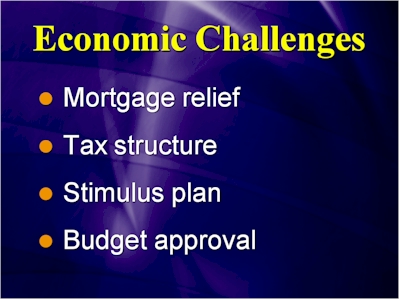What is the best way to practice a presentation? Some resort to memorizing a well-written speech; some rehearse pre-written notes in an outline format; while others keep repeating an “off-the-cuff” delivery over and over until comfortable. All of these approaches focus on the content. But there is another method.
Focus on the context. The most effective way to own your material, and deliver the presentation in the most natural manner possible, is to never practice what you can see. Only practice what you can’t see. In other words, if a slide contains four bullet points, then when the slide is visible, obviously you can see it! The part that you can see is the content of the slide. Why practice it or even try to commit it to memory? If you need to reference the content, just glance at it.
BUT…you need to practice the stuff you can’t see — the context. This is the part of the slide that ties the content to the logic. You need to rehearse the verbal transitions that get you from the prior slide to the current one; from one bullet point to the next, from the current slide to the next one, and so on. Transitions include stories, examples, analogies, and other connectors, which advance the topic. By practicing what you can’t see (context), you will not fall into the trap of reading back what everyone can see (content).
Take a look at this visual, a bulleted list of points related to a single headline (topic).

The bullet points and the headline are CONTENT items. If you happen to forget any one of these data points, such as “Tax structure”, you can simply look at the slide to see the words in the second bullet point. But, what you can’t see are the underlying comments, the CONTEXT items, which you plan to deliver on that bullet point.
Practice what you plan to say about “Tax structure”; that is, what triggers you to discuss the point, the details you will use to support the points, etc. By practicing context, presenters make it look as if the topic is unfolding so smoothly. Each transition has been thought out and the language supporting the visible points is fluid.
The best presentations appear to unfold like a conversation, not a narration. Focusing on context, not content, during preparation helps that conversational tone arise quite naturally.
